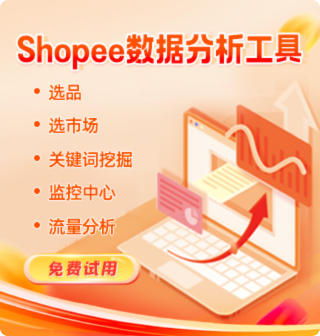-
用户199****8890
Shopee Market Trends Analysis: In-Depth Insights for Sellers in 2024-2025
Shopee is one of Southeast Asia’s largest and fastest-growing e-commerce platforms, playing a pivotal role in transforming retail landscapes across multiple countries. For sellers and businesses aiming to thrive on Shopee, continuously understanding market trends is crucial for making strategic decisions on product selection, marketing, and customer engagement.
This article provides a comprehensive Shopee market trends analysis, incorporating current consumer behaviors, emerging product categories, technological influences, and actionable insights to capitalize on the evolving e-commerce environment.
1. Explosive Growth and Regional Expansion
Shopee's user base and GMV (Gross Merchandise Volume) have seen exponential growth over recent years, driven by:
Increasing internet penetration and smartphone adoption in Southeast Asia.
Widening digital payment infrastructure and logistics improvements.
Government initiatives supporting digital economies.
In 2024-2025, Shopee is not only consolidating its presence in countries like Indonesia, Malaysia, Thailand, Vietnam, the Philippines, and Taiwan but also cautiously expanding into new markets, including parts of South Asia and Latin America.
Insight for sellers: Expanding into different Shopee marketplaces requires understanding local consumer preferences, regulatory environments, and logistics capabilities.
2. Consumer Behavior Shifts Toward Convenience and Personalization
E-commerce consumers on Shopee increasingly value:
Fast and reliable delivery: Same-day or next-day delivery expectations are rising.
Omnichannel shopping experiences: Buyers browse on mobile apps but want easy return/exchange options.
Personalized recommendations: AI-driven product suggestions improve engagement.
Social proof: Reviews, ratings, and influencer content strongly impact purchase decisions.
Practical action: Optimize your store for mobile responsiveness, participate actively in Shopee Live streams, and encourage satisfied buyers to leave authentic reviews.
3. Popular Product Categories and Emerging Niches
While traditional categories such as fashion, electronics, and health & beauty remain dominant, new niches are gaining traction:
Health and wellness: Supplements, fitness equipment, and mental wellness apps.
Eco-friendly products: Biodegradable packaging, sustainable fashion, and household goods.
Home improvement and smart home devices: Driven by remote work cultures.
Pet care products: Food, accessories, and health supplements for pets.
Seller tip: Use Shopee’s Seller Center analytics and market research reports to track trending keywords and adapt your inventory accordingly.
4. The Rise of Social Commerce and Live Streaming
Shopee has heavily invested in social commerce tools, such as Shopee Live, where sellers showcase products in real time, interact with customers, and offer flash sales.
Live streaming boosts conversion rates by:
Building trust through real-time demonstrations.
Creating urgency with exclusive time-limited offers.
Engaging customers with interactive Q&A and giveaways.
Key takeaway: Incorporate live streaming into your marketing strategy and train your team to use engaging storytelling and product presentations.
5. Increasing Importance of Sustainability and Ethical Consumption
More Shopee shoppers, especially younger demographics, prioritize brands demonstrating social responsibility and environmental sustainability.
Examples include:
Transparent supply chains.
Eco-friendly manufacturing processes.
Packaging reduction or recyclable materials.
How sellers can respond: Highlight sustainable practices in product descriptions, obtain relevant certifications, and participate in Shopee campaigns focused on green products.
6. Enhanced Use of AI and Automation in Operations
AI-powered tools influence various aspects of Shopee’s ecosystem:
Search algorithms: Better matching of buyer queries to relevant products.
Dynamic pricing: Sellers can use AI tools to adjust prices based on competitor activity and demand.
Inventory management: Automated restocking alerts and sales forecasting improve efficiency.
Chatbots: Provide instant responses to common customer inquiries.
Advice: Explore third-party AI tools compatible with Shopee Seller Center to improve operational efficiency and reduce manual workload.
7. Cross-Border E-commerce and Global Sourcing
Cross-border trade on Shopee is growing, enabling sellers to source products internationally and reach buyers beyond their domestic markets.
Benefits include:
Access to a wider variety of trending products.
Ability to tap into underserved niches.
Competitive pricing from global suppliers.
Challenges involve customs clearance, shipping times, and after-sales service. Sellers must carefully manage compliance and logistics to avoid penalties.
Actionable Recommendations for Shopee Sellers
Stay Data-Driven: Leverage Shopee’s analytics dashboard and third-party market intelligence tools to monitor competitor pricing, trending products, and consumer interests.
Enhance Customer Experience: Focus on fast shipping, seamless returns, responsive service, and clear communication to boost seller ratings.
Diversify Product Range: Experiment with emerging categories such as sustainability-focused products or health supplements to capture new demand segments.
Invest in Content Marketing: Use high-quality images, videos, and live streams to engage customers and explain product benefits thoroughly.
Optimize for Mobile and Local Markets: Localize language, payment options, and promotions to suit each Shopee country’s preferences.
Maintain Compliance: Regularly review Shopee’s policies to avoid penalties related to product restrictions, intellectual property, and logistics.
Conclusion
Shopee’s market continues to evolve rapidly, shaped by technological advancements, shifting consumer values, and regional economic developments. Staying ahead requires sellers to be agile, data-conscious, and customer-focused.
The key market trends in 2024-2025 include the growing importance of health and eco-friendly products, the rise of social commerce, increasing expectations for convenience, and the expansion of cross-border opportunities. Sellers who adapt to these trends with smart inventory choices, enhanced customer engagement, and operational excellence will be best positioned to succeed on Shopee’s platform.
Final thought: Regularly revisit your Shopee strategy to incorporate emerging trends and tools—success on Shopee is a dynamic journey, not a one-time setup.

